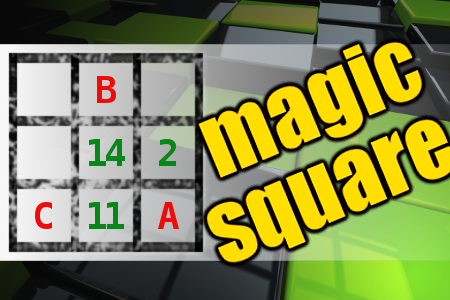MAGIC SQUARE: Calculate A*B*C
The aim is to place the some numbers from the list (2, 4, 11, 12, 14, 21, 24, 26, 33, 65, 70) into the empty squares and squares marked with A, B an C. Sum of each row and column should be equal. All the numbers of the magic square must be different. Find values for A, B, and C. Solution is A*B*C.Correct answers: 1
#brainteasers #math #magicsquare

The Panda
A panda bear walks into a restaurant and orders a meal.
After eating he pulls out a gun, shoots the place to the ground, and runs away. Quickly the bartender runs after him yelling, "HEY YOU CAN'T DO THIS!!!" The panda turns around and yells "Yes I can. Look me up in the encyclopedia!" So, the bartender looks up "Panda" in the encyclopedia, and it reads "Panda: increasingly rare species of bear that can be found in the eastern part of Asia. It eats shoots and leaves.”
